Misura del PNRR Missione 1 (M1C3) – Misura 2 – “Rigenerazione di piccoli siti culturali, patrimonio culturale, religioso e rurale” – Investimento 2.2: “Protezione e valorizzazione dell’architettura e del paesaggio rurale”, funded by the European Union NextGenerationEU;
PROJECT: Dray stone wall of the Farmhause of the Riforma Fondiaria;
ID DOMANDA: PNRRM1C3-2.2-2022-002215 – N. progressivo: P403 CUP:B84H22000970004.
MATER – BIODIVERSITY AND THE RESTORATION OF DRY-STONE WALLS IN THE HEART OF THE TORRE GUACETO PROTECTED NATURAL RESERVE, ALONG THE SOUTHERN VIA FRANCIGENA AND THE HELLENIC PATH OF THE MATERAN WAY.
In MATER, part of the land borders the trails of the Southern Via Francigena and the Hellenic Path of the Materan Way, connecting Brindisi to Matera. These routes attract pilgrims, walkers, and ecotourists throughout the year, including cyclists seeking immersive “environmental” experiences. The trails wind through the Natural Reserve with monumental trees, wetlands for migratory birds, archaeological sites, dunes, and the sea, where visitors can admire the famous 16th-century Aragonese Tower.
The dry-stone walls marking MATER’s borders along the trails have been restored for two purposes:
- Environmental Sustainability: The walls, built using stones from the land, serve as ecological corridors, supporting a rich microfauna of insects, small reptiles, and amphibians that aid agriculture by maintaining a healthy, pest-free environment;dry stone walls take on an even more crucial role in tackling the challenges posed by climate change. Their ability to absorb rainwater and release it gradually into the soil is essential for mitigating the effects of rising temperatures and prolonged droughts. Through this natural function, dry stone walls help preserve the resilience of local ecosystems, providing a safe haven for many plant and animal species and supporting agriculture in increasingly vulnerable areas. Beyond being an invaluable cultural heritage, they represent a sustainable solution to counteract the impact of the climate crisis.
- Educational Nature Path: A 230-meter-long path was created along the restored wall to offer an environmental education experience. It serves as a welcoming stop for walkers, pilgrims, and ecotourists, providing insights into the area’s unique landscape and the role of the walls in the ecosystem.
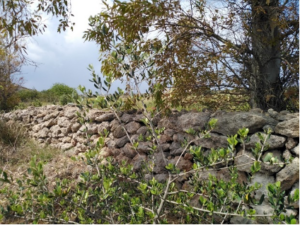


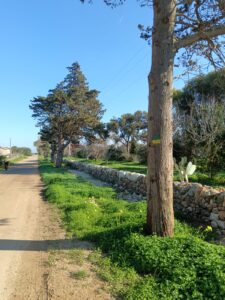
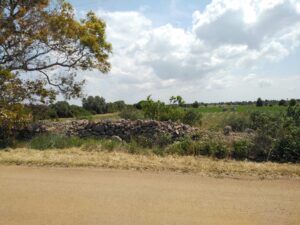
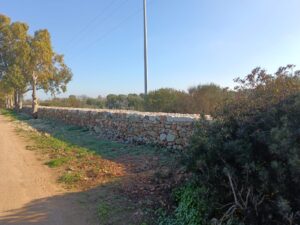
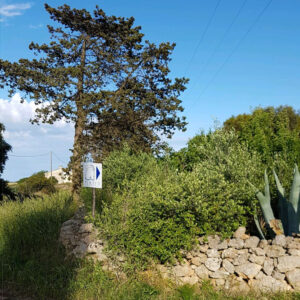
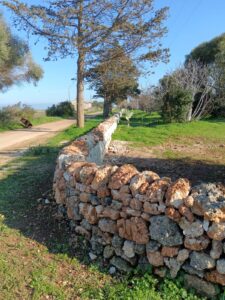
fig. 1/1.a-2/2.a-3/3.a-4/4.a DRY-STONE WALL, SOUTH SIDE, before and after restoration.
The dry-stone walls, with their spontaneous vegetation, form a vital ecosystem and microclimate, supporting Mediterranean plants and aiding their survival during summer droughts. Numerous botanical species thrive on or near the walls, including herbs, shrubs, and trees like thyme, myrtle, fig, and almond. Mosses and lichens, pioneers of the wall’s life, allow other plants to grow. The walls also house bird nests within their foliage-covered crevices.
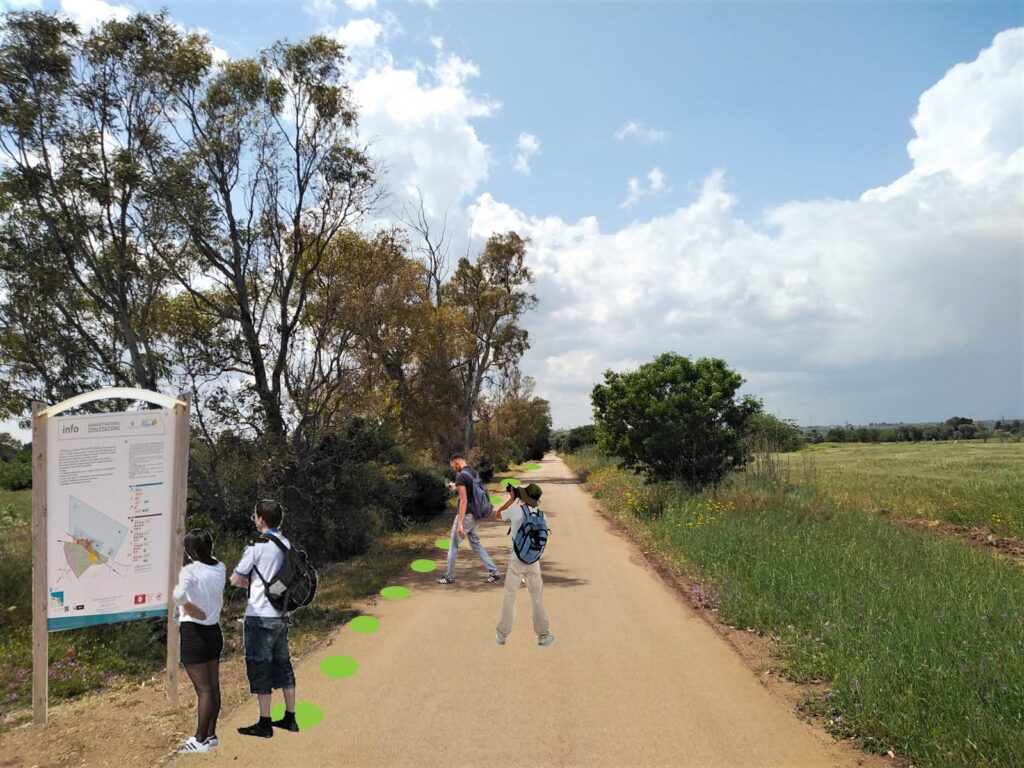
The restoration of the walls and the creation of the nature path have re-established this beautiful ecosystem while promoting a culture of hospitality. Information panels and signage were installed to guide visitors, highlighting the dry-stone walls’ ecological and cultural significance within Torre Guaceto’s Marine Reserve.
The Value of Dry Stone Walls: An Intangible Heritage of Humanity to be Preserved
The Technique:
Dry stone walling is an ancient tradition from Puglia, involving the manual assembly of natural stones without mortar to create durable structures. These walls, crafted by skilled artisans known as “paretari,” define agricultural land and are emblematic of the Apulian landscape. Recognized in 2018 by UNESCO as Intangible Cultural Heritage, dry stone walls represent both art and a symbol of Puglia’s rural culture.
Where it is prevalent:
Dry stone walls have been historically used worldwide—from the Greeks and Romans to Mediterranean, Latin American (especially in Peru), and Chinese cultures. In Italy, they are prominent in Valtellina, the Amalfi Coast, Pantelleria, Cinque Terre, Salento, and the Itria Valley.
Steps to Build Dry Stone Walls:
- Material Collection: Select stones of various sizes and gather tools and accessories like gravel for drainage.
- Site Preparation: Clear vegetation, level the ground, and assess the need for light foundation work.
- Construction: Assemble stones starting from the base, ensuring stability and allowing for drainage gaps. Maintain a trapezoidal cross-section using a double-line technique.
- Finishing: Fill voids with small stones or soil and finalize with the “cappello” (top layer) for stability and aesthetics.
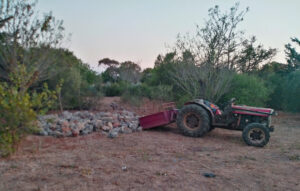
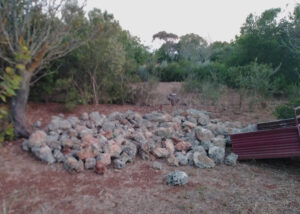
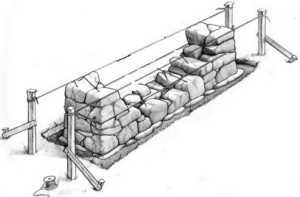
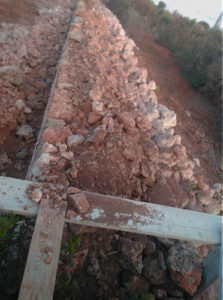
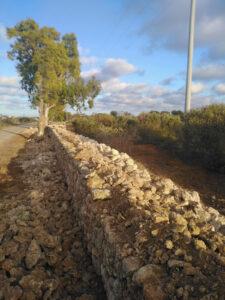


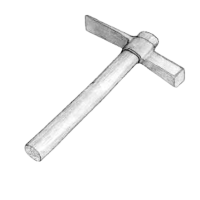
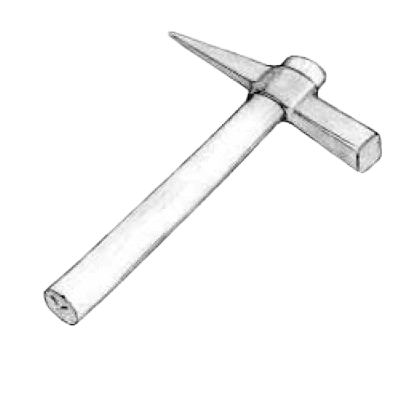
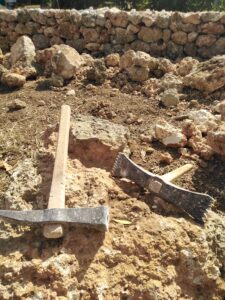
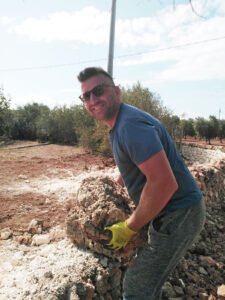
fig.10-11-12-13-15 Stone working tools and stone craftsman.
Descriptive Sheets of Wild Animals:
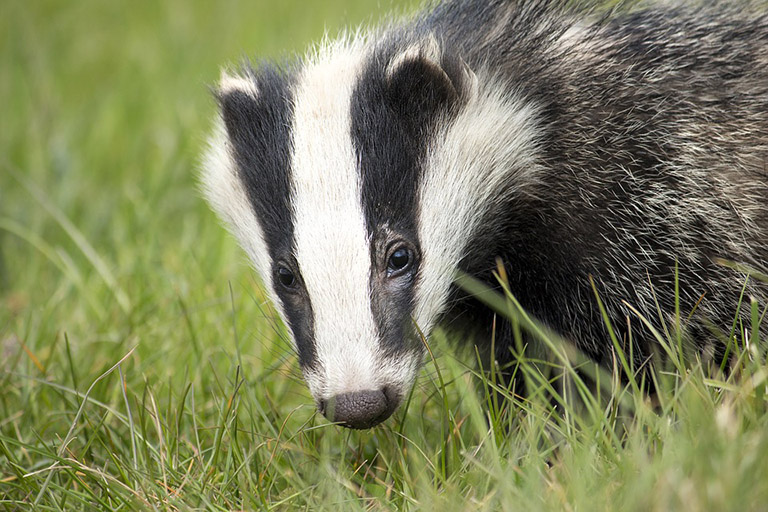
Badger (Meles meles)
- Visual description: Robust mammal with a stocky body, elongated snout, and short legs. The fur is gray with black stripes along the snout and back.
- Habitat: Forests, woods, open fields, and countryside edges.
- Diet: Omnivorous; feeds on insects, worms, small mammals, fruits, and roots.
- Behavior: Nocturnal, lives in family groups, and digs complex burrows called setts.
- Activity period: Mainly active at night, throughout the year.
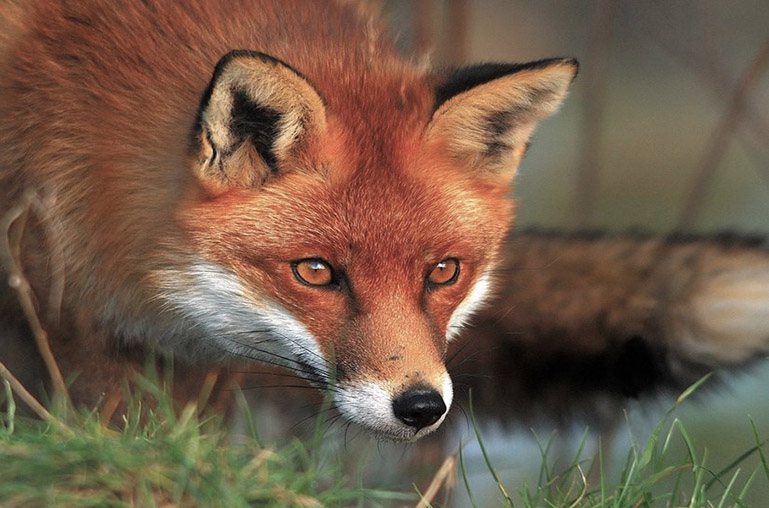
Fox (Vulpes vulpes)
- Visual description: Slender mammal with a pointed snout, pointed ears, red fur, and a bushy tail.
- Habitat: Forests, fields, mountains, and urban areas.
- Diet: Omnivorous; feeds on small mammals, birds, insects, fruits, and garbage.
- Behavior: Solitary, adaptable, and intelligent. Builds dens for reproduction.
- Activity period: Crepuscular and nocturnal.
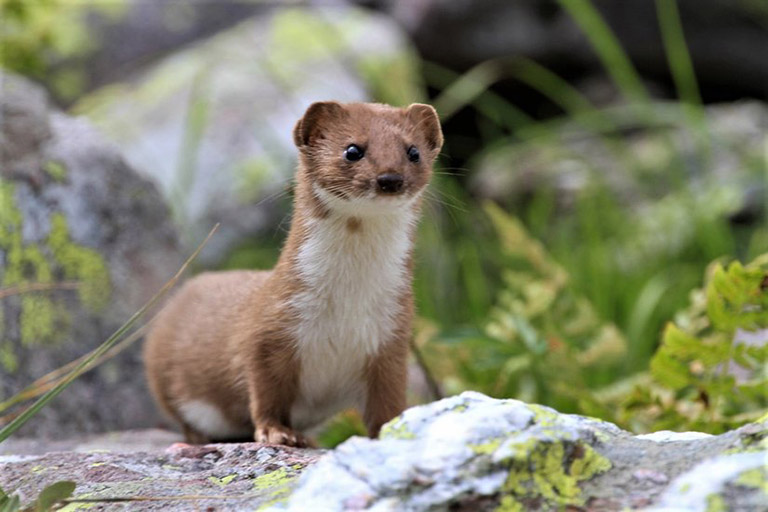
Weasel (Mustela nivalis)
- Visual description: Small and slender mammal with brown fur on the back and white on the belly. It has an elongated body and short legs.
- Habitat: Fields, woods, prairies, and agricultural areas.
- Diet: Carnivorous; feeds on small rodents, birds, insects, and reptiles.
- Behavior: Solitary and territorial. Skilled in hunting and capturing prey.
- Activity period: Active throughout the year, mainly during the day.
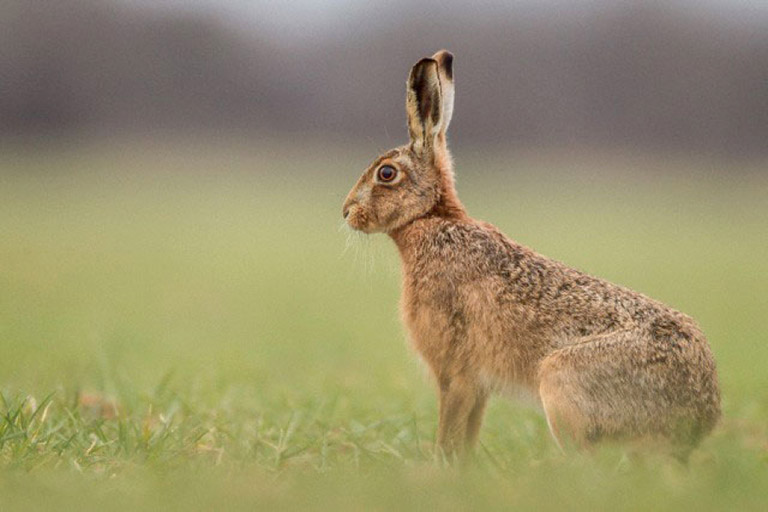
Hare (Lepus europaeus)
- Visual description: Mammal with long ears and a short tail. The fur is brown with grayish and whitish shades.
- Habitat: Prairies, cultivated fields, and woods.
- Diet: Herbivorous; feeds on grass, leaves, shoots, and bark.
- Behavior: Solitary or in small groups, very fast and skilled at escaping predators.
- Activity period: Mainly crepuscular and nocturnal.
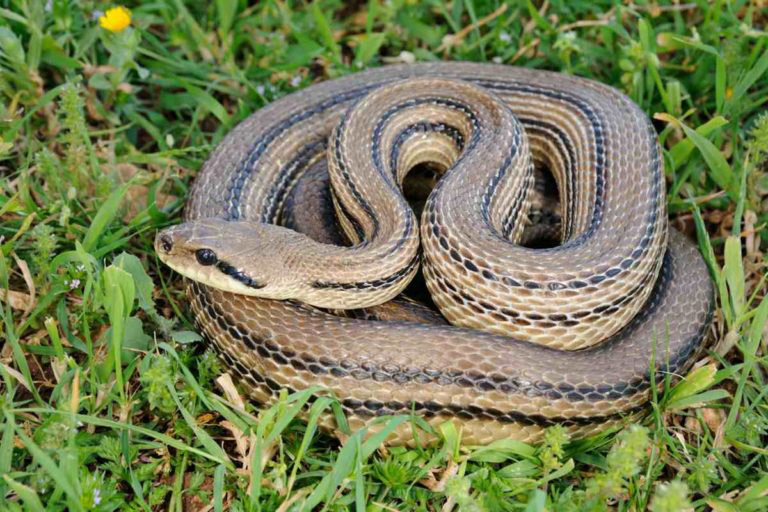
Four-lined Snake (Elaphe quatuorlineata)
- Visual description: Long and slender snake with yellow and brown scales forming longitudinal stripes.
- Habitat: Woods, Mediterranean scrub, cultivated fields, and dry stone walls.
- Diet: Carnivorous; feeds on rodents, birds, lizards, and eggs.
- Behavior: Diurnal and terrestrial, often seen basking in the sun.
- Activity period: Mainly active from spring to autumn.
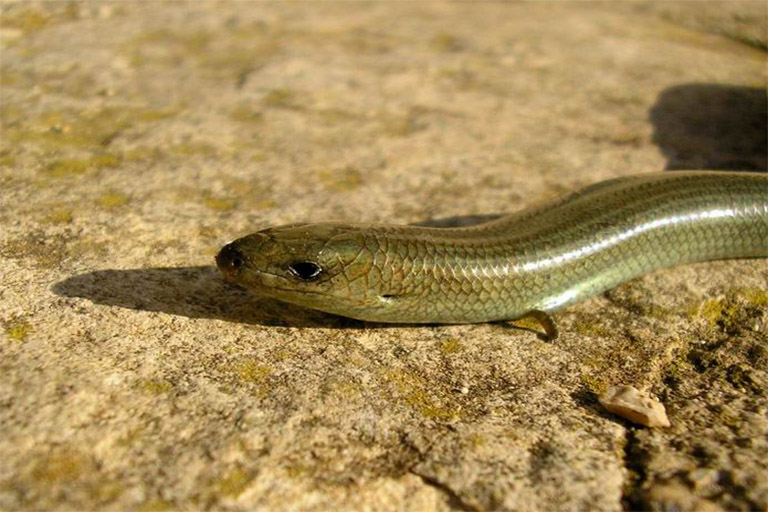
Italian Three-toed Skink (Chalcides chalcides)
- Visual description: Reptile with a long and cylindrical body, smooth and shiny scales, usually brown or gray in color.
- Habitat: Prairies, cultivated fields, forest edges, and humid areas.
- Diet: Insectivorous; feeds on insects, arachnids, and small invertebrates.
- Behavior: Diurnal and elusive, skilled at hiding in vegetation.
- Activity period: Mainly active from spring to autumn.
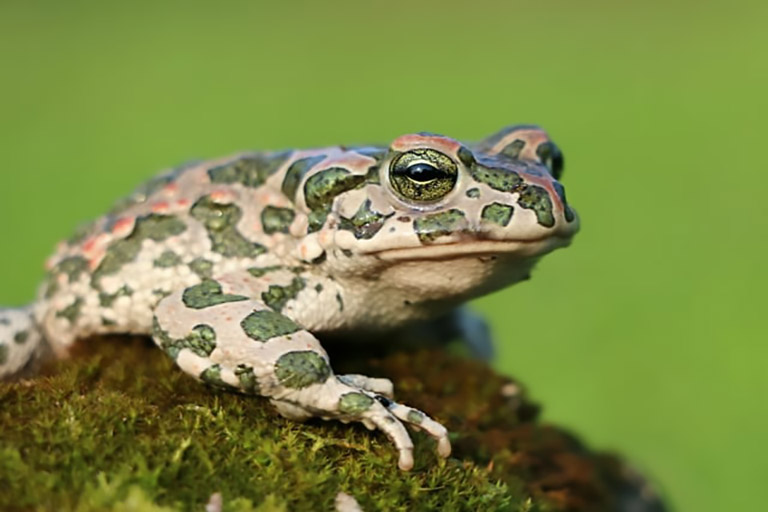
Green Toad (Bufo viridis)
- Visual description: Amphibian with warty green skin with darker spots and prominent eyes.
- Habitat: Humid areas, ponds, rivers, and cultivated fields.
- Diet: Insectivorous; feeds on insects, earthworms, and other small invertebrates.
- Behavior: Nocturnal, hides during the day, and becomes active at night.
- Activity period: Mainly active from spring to autumn.
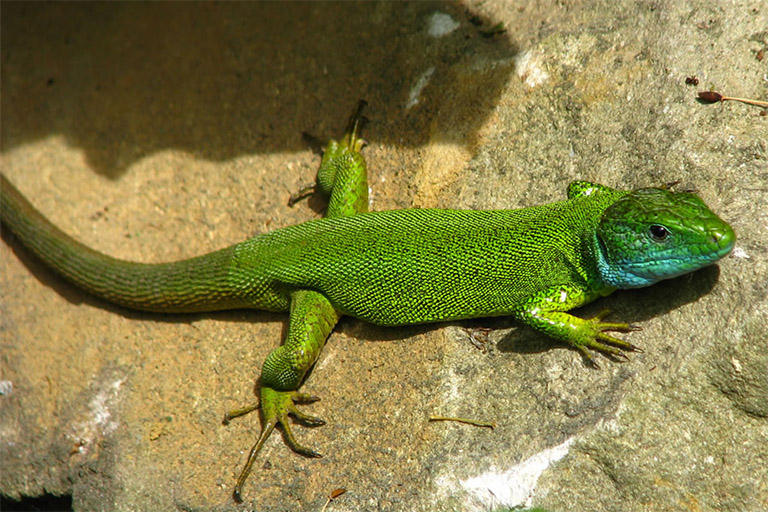
Green Lizard (Lacerta bilineata)
- Visual description: Large lizard with bright green skin and yellow stripes along the sides of the body.
- Habitat: Woods, Mediterranean scrub, meadows, and gardens.
- Diet: Insectivorous; feeds on insects, arachnids, and small invertebrates.
- Behavior: Diurnal, territorial, and agile, often seen basking in the sun.
- Activity period: Mainly active from spring to autumn.
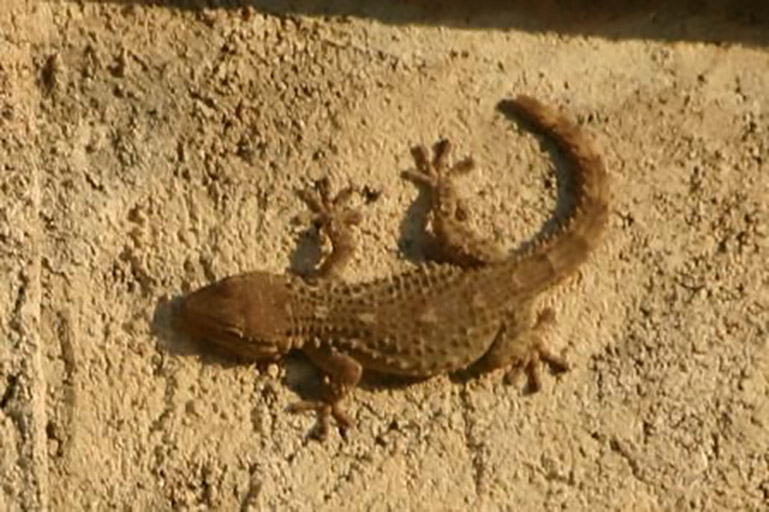
Common Gecko (Tarentola mauritanica)
- Visual description: Stocky reptile with rough skin of gray or brown color and adhesive toes.
- Habitat: Walls, rocks, human dwellings, and forests.
- Diet: Insectivorous; feeds on insects, arachnids, and other small invertebrates.
- Behavior: Nocturnal, skilled at moving on vertical surfaces thanks to its adhesive toes.
- Activity period: Mainly active during the night and throughout the year.
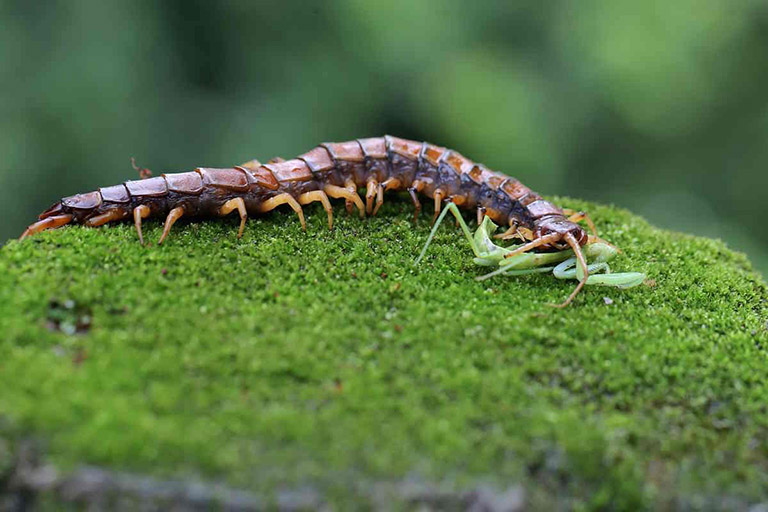
Mediterranean Centipede (Scolopendra cingulata)
- Visual description: Large centipede with a segmented body of brown or reddish color and venomous legs.
- Habitat: Underbrush, caves, humid areas, and human dwellings.
- Diet: Carnivorous; feeds on insects, arachnids, and other small invertebrates.
- Behavior: Nocturnal and aggressive, uses its venomous legs to capture and paralyze prey.
- Activity period: Mainly active during the night and throughout the year.
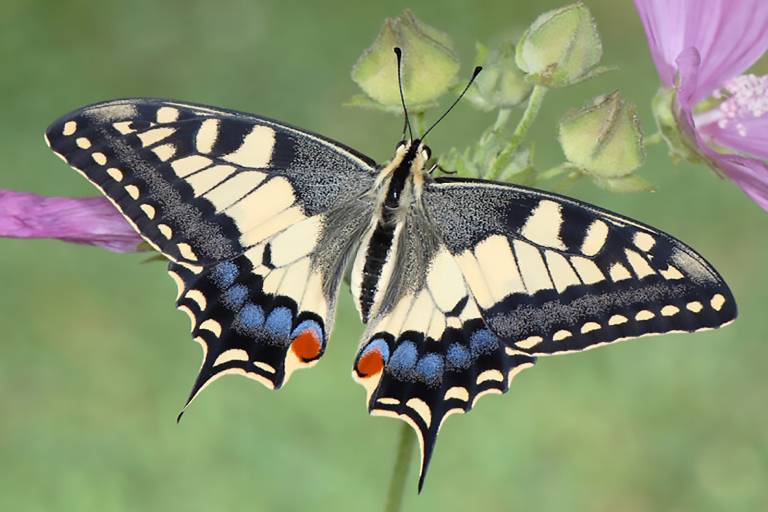
Swallowtail butterfly (Papilio machaon)
- Visual Description: Light yellow wings with brown-black spots, blue band, and red eyespot.
- Habitat: Europe, Asia, Canada, Alaska, California. Various areas, from plains to mountains.
- Diet: Caterpillars eat host plant leaves; adults drink flower nectar.
- Behavior: Solitary, active during the day, important pollinator.
- Activity Period: Three generations a year, active from April to late autumn.
Descriptive Sheets of Plants:
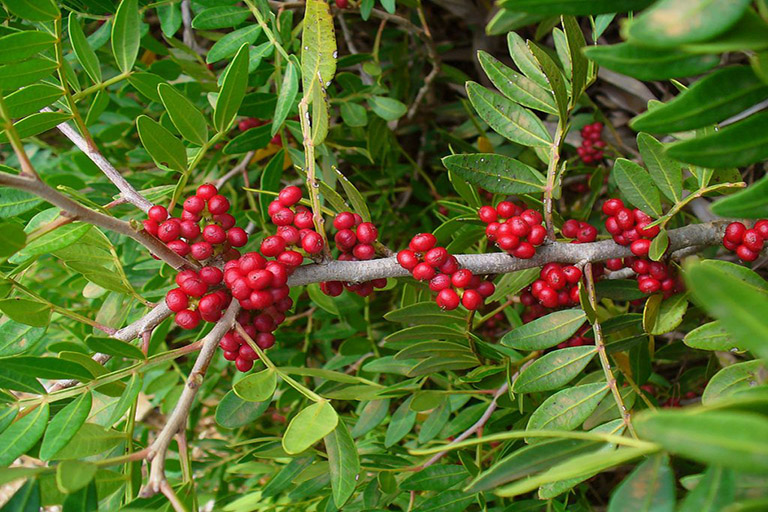
Mastic Tree (Pistacia lentiscus)
- Visual description: Evergreen shrub with leathery dark green leaves and small yellowish flowers. It produces red berries that turn black when ripe.
- Medicinal properties: The resin of the mastic tree, known as Chios mastic, has anti-inflammatory, antibacterial, and antifungal properties. It is used for gastrointestinal and respiratory issues.
- Culinary uses: Mastic is used in the preparation of sweets, ice creams, and liqueurs, giving them a distinctive aroma.
- Ancient use: Farmers chewed the resin to maintain dental and gum health. It was also used to seal ceramics and repair tools.
- Flowering period: Spring.
- Fruiting period: Summer and autumn.
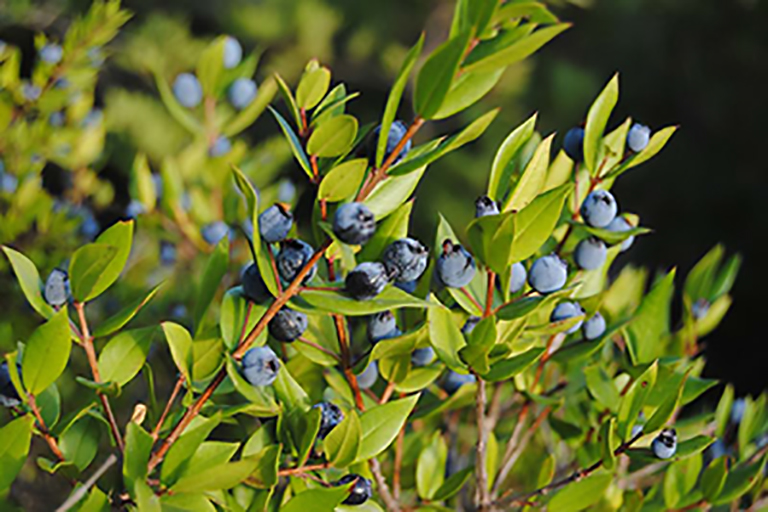
Myrtle (Myrtus communis)
- Visual description: Compact evergreen shrub with small, glossy dark green leaves. The flowers are white and fragrant, followed by blue-black berries.
- Medicinal properties: It has astringent, antiseptic, and anti-inflammatory properties. It is used to treat oral and respiratory infections.
- Culinary uses: The berries are used to produce myrtle liqueur. The leaves can be used to flavor meats and traditional Mediterranean dishes.
- Ancient use: Myrtle berries were used to produce infusions and decoctions to treat digestive and respiratory problems. The leaves, thanks to their astringent properties, were used to disinfect and treat small wounds.
- Flowering period: Spring and summer.
- Fruiting period: Autumn.
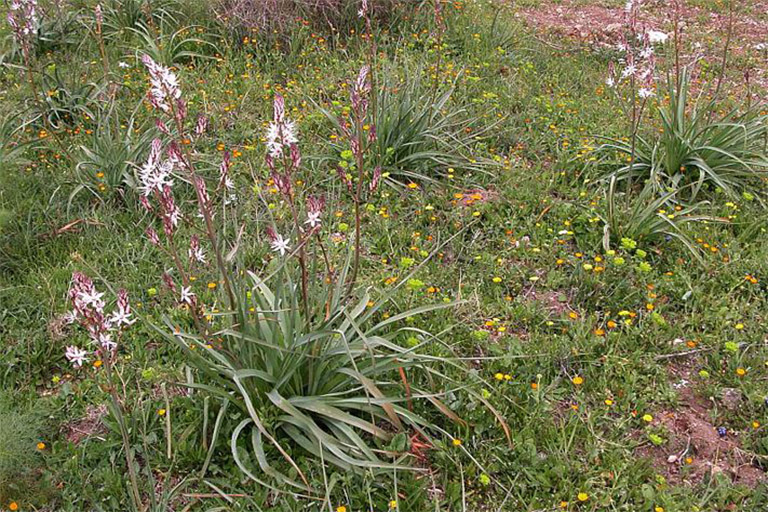
Asphodel (Asphodelus)
- Visual description: Perennial plant with long, narrow leaves, similar to grass. It produces tall flowering stems with white or pink flowers arranged in spikes.
- Medicinal properties: Traditionally used for its diuretic and soothing properties. It is used to treat skin problems and inflammations.
- Culinary uses: Although not very common, some species of asphodel can be used in cooking, especially the bulbs, after cooking.
- Ancient use: The bulbs of asphodel, after cooking, were used as food during periods of scarcity. The roots were also used in infusions to treat rheumatic problems and inflammations.
- Flowering period: Spring.
- Fruiting period: Summer.
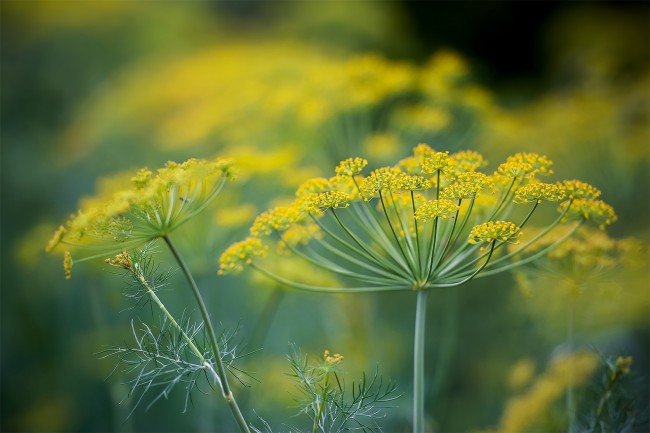
Wild Fennel (Foeniculum vulgare)
- Visual description: Herbaceous plant with finely divided, thread-like leaves. The yellow flowers are arranged in umbels.
- Medicinal properties: It has digestive, carminative, and antispasmodic properties. It is used to relieve gastrointestinal disorders, such as bloating and cramps.
- Culinary uses: The seeds and leaves are widely used to flavor meat, fish, and vegetable dishes. It is also used in the preparation of digestive teas.
- Ancient use: Fennel seeds were chewed to freshen the breath and aid digestion. The leaves were used to flavor simple dishes like soups and stews.
- Flowering period: Summer.
- Fruiting period: Autumn.
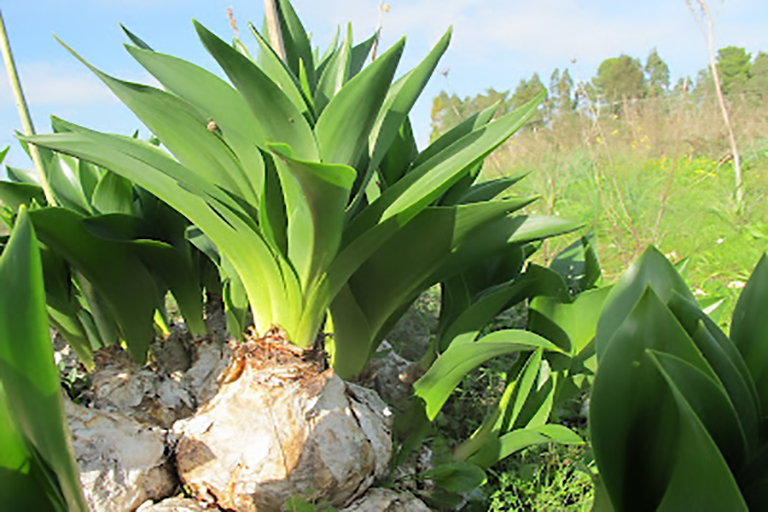
Sea Squill (Urginea maritima)
- Visual description: Bulbous plant with large shiny green leaves. The flowering stems produce white flowers arranged in spikes.
- Medicinal properties: The bulb has cardiotonic and diuretic properties. It is used in traditional remedies to treat heart and respiratory problems.
- Culinary uses: Not commonly used in cooking due to its toxicity, but the bulb is used in medicinal preparations under strict medical supervision.
- Ancient use: The bulb of sea squill was used in folk medicine to prepare remedies for heart and respiratory problems. Due to its toxicity, it was used with great caution.
- Flowering period: Summer.
- Fruiting period: Autumn.
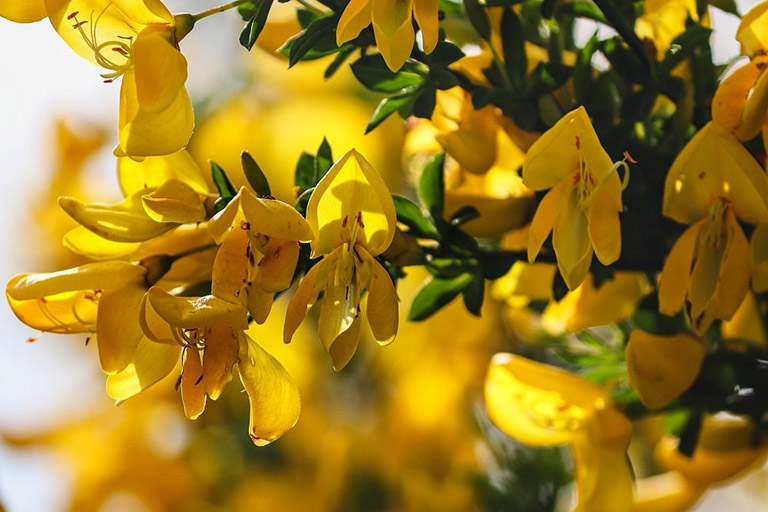
Spanish Broom (Spartium junceum)
- Visual description: Shrub with green, slender branches. The yellow flowers are fragrant and very showy, similar to butterflies.
- Medicinal properties: It has diuretic, anti-inflammatory, and antiseptic properties. It is used to treat urinary infections and rheumatic problems.
- Culinary uses: The fragrant flowers can be used to flavor sweets and beverages, but it is less common compared to other aromatic plants.
- Ancient use: Spanish broom flowers were used to prepare diuretic teas. The fibers from the branches were processed to create ropes and rustic fabrics.
- Flowering period: Spring and summer.
- Fruiting period: Summer.

Wild Asparagus (Asparagus acutifolius)
- Visual description: Perennial plant with needle-like leaves and edible dark green shoots (spears).
- Medicinal properties: It has diuretic, depurative, and tonic properties. It is used to improve kidney function and purify the body.
- Culinary uses: The spears are highly appreciated in cooking for their intense flavor. They can be used in soups, risottos, omelets, and other preparations.
- Ancient use: The spears of wild asparagus were collected by farmers to enrich their diet with a nutritious and flavorful food. They were consumed fresh, in soups, or preserved in oil.
- Flowering period: Spring.
- Fruiting period: Summer.
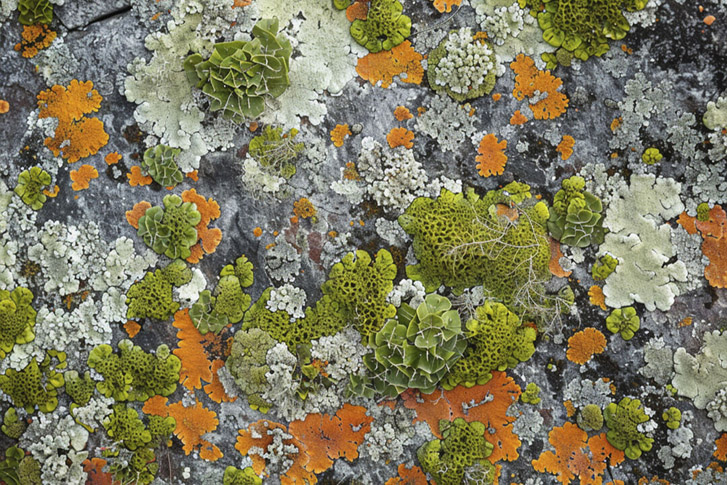
Mosses and Lichens
Mosses:
- Visual Description: Small, non-vascular plants, often green and soft, growing in dense mats.
- Medicinal Properties: Used for their anti-inflammatory and wound-healing properties.
- Culinary Uses: Not commonly used in cooking.
- Ancient Use: Used as stuffing material and for food preservation.
- Flowering Period: Do not flower, but produce spores.
- Fruiting Period: Produce spore capsules throughout the year.
Lichens:
- Visual Description: Symbiotic organisms with crustose, foliose, or fruticose thalli, often gray, green, or yellow.
- Medicinal Properties: Used for their antibiotic and anti-inflammatory properties.
- Culinary Uses: Some species are edible and used in salads or as food additives.
- Ancient Use: Used as natural dyes and for wound care.
- Flowering Period: Do not flower, but produce spores.
- Fruiting Period: Produce spores throughout the year.





Scopri gli altri progetti di Mater
Contatti
Dove Siamo
© Tutti i diritti riservati. Mater di Tommasina Gengaro – P.IVA 02749790644 | Privacy policy – Cookie Policy
